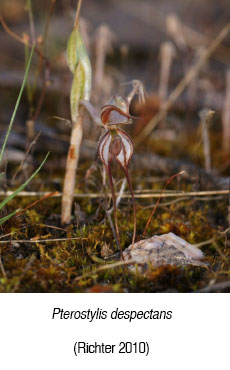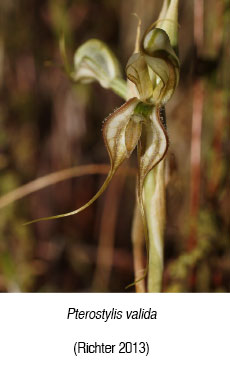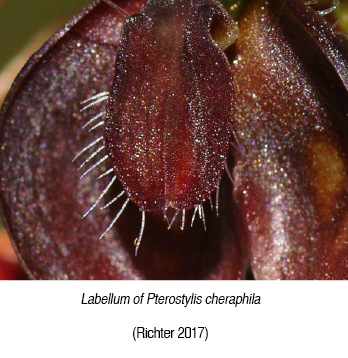<< BACK TO PROJECT LIST
Project: 354/2023
Title: Pollination by sexual deception in endangered Rustyhoods (the Pterostylis rufa group) and its implications for conservation
Applicant: Eamonn Culhane
Institution: School of Agriculture, Biomedicine and Environment, La Trobe University Orchid Conservation Program, Royal Botanic Gardens, Victoria
Pollination by sexual deception is a highly specialised pollinator relationship that has evolved multiple times within Orchidaceae. This strategy involves the orchids mimicking female chemical, visual and tactile signals to induce and exploit mating behaviour from male pollinators, leading to copulation with the flower and pollination.
Pterostylis is noteworthy for being the first Australian genus shown to sexually deceive Diptera, specifically Sciaroidea fungus gnats. The Pterostylis rufa group is a section of poorly studied orchids with a centre of diversity in semi-arid parts of southern Australia. Unfortunately, many of these species have been impacted by habitat clearing.
This study will focus on four species (P. despectans, P. basaltica, P. valida and P. cheraphila) which are currently listed as at risk of extinction under state and federal legislation. These species are being assessed for translocation of new populations, but a key missing element is the identification of their pollinators.
I will employ bait flowers to attract pollinators for the identification of species and to test for their presence at possible translocation sites. Potential pollinator sharing will be investigated as this poses a risk of hybridisation of translocated plants with co-occurring species. The rate of fruit set in a population of each species will be recorded to inform conservation practices.
Few studies have used floral manipulation experiments to test the role of floral traits in achieving pollination by fungus gnats. This study will test the morphological significance the labellum and lateral sepals play in attraction of pollinators in the Pterostylis rufa group.



